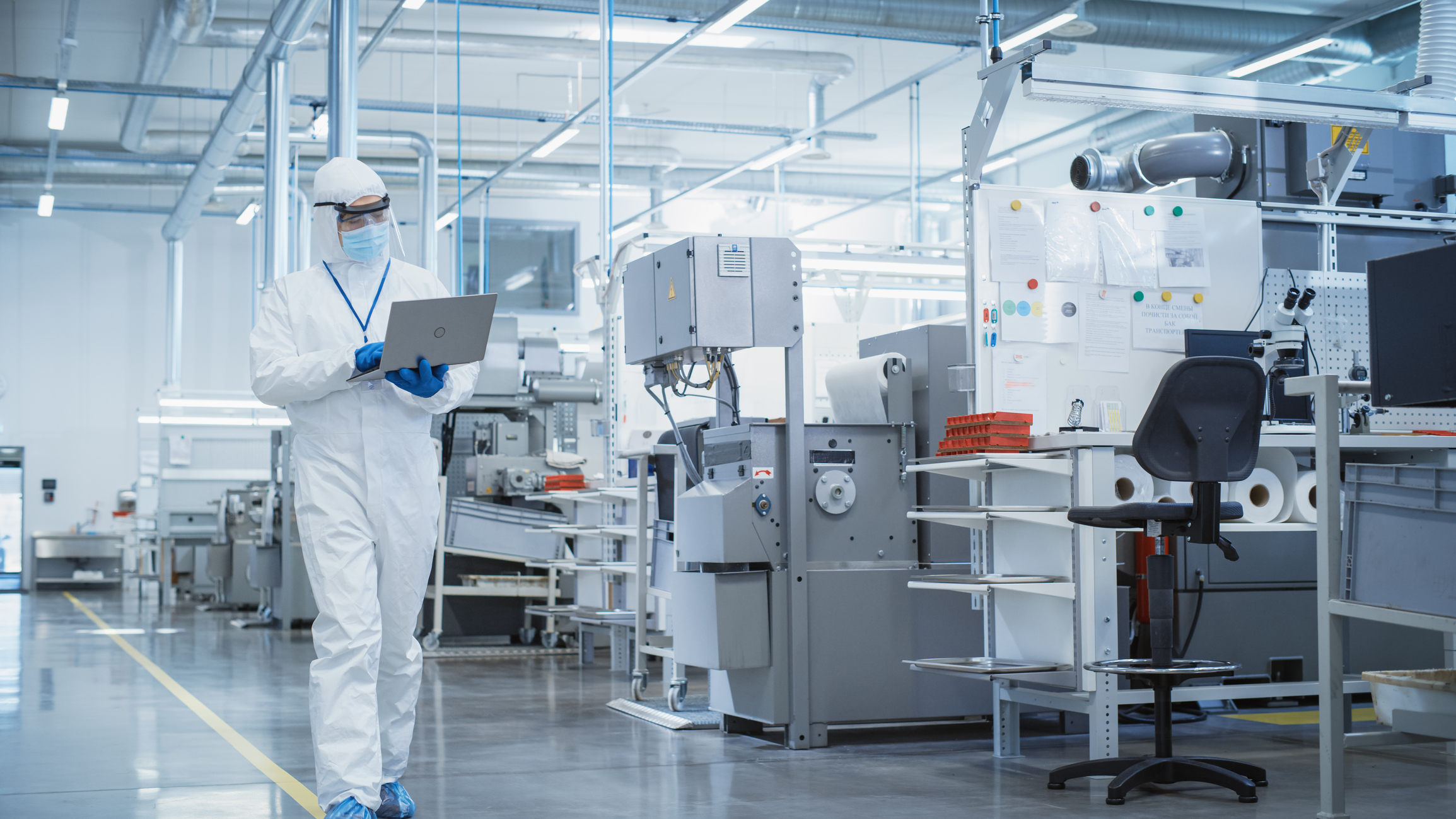technology
Is AI making us dumb? Or is it reshaping industries and driving innovation?

As AI technology continues to grow and evolve, many people express concern about its impact on human intelligence. Is Generative AI making us less capable, or is it revolutionizing how industries operate and innovate? The answer is not simple, as it brings both benefits and challenges that we must navigate carefully.
The Double-Edged Sword of generative AI
On one hand, GenAI has enhanced efficiency, allowing us to automate repetitive tasks and focus our energy on more creative and important ones. By managing mundane chores, generative AI frees up human intellect for innovation. For example, in healthcare, it is transforming diagnostics, drug discovery, and treatment plans. In environmental sustainability, it optimizes resource usage and helps develop eco-friendly materials.
However, there is a flip side. With generative AI doing more of our cognitive heavy lifting, there’s concern that we may lose essential skills. Take writing, for example: generative AI can generate emails or content, improving efficiency but potentially diminishing our ability to write effectively over time. As it evolves, some fear we may rely too much on it, resulting in skill atrophy.
AI’s Industry-Wide Transformation
Despite these concerns, AI’s potential to reshape industries is profound. From healthcare to transportation, AI is revolutionizing processes and driving innovation that was previously unimaginable.
Some of the top industries benefiting from generative AI are:
Healthcare:
The healthcare industry is in constant pursuit of alleviating challenges associated with the accurate diagnosis of complex medical conditions, inefficient drug discovery processes, and concerns regarding the privacy of patient data. Generative AI is revolutionizing healthcare by generating synthetic medical images for training, creating personalized treatment plans, and identifying potential drug targets. For instance, Siemens Healthcare is utilizing the generative AI platform NVIDIA Clara Holographic Imaging to develop more realistic digital twins of organs, while Pfizer is leveraging generative AI, including the platform Charlie, aimed at revolutionizing pharma marketing by improving content creation, editing, fact-checking, and legal reviews in a highly regulated industry. Additionally, Pfizer is also using generative AI to assess and collate large amounts of contextual data, identify trends, and discover new oncology targets, as well as create first drafts of patent applications and generate medical and scientific content for human review.
Moreover, generative AI can help create personalized cancer treatment plans by analyzing patient data and generating tailored recommendations. The BioTech company Tempus has launched a clinical assistant tool, Tempus One, that uses generative AI to provide clinicians with access to patient insights directly at their fingertips. In medical imaging, generative AI generates synthetic images to augment limited training datasets, improving the accuracy of diagnostic models. Furthermore, generative AI-powered chatbots can assist patients with simple inquiries, allowing healthcare professionals to focus on complex cases.
Education:
One of the biggest challenges in education is a one-size-fits-all approach to teaching, subjective assessment methods, and a lack of personalized learning experiences tailored to individual student needs. Generative AI can address this by generating personalized learning materials, predicting student outcomes, and identifying learning gaps. DreamBox Learning, a leader in adaptive learning, utilizes the IBM Watson platform to create customized learning paths for students, adjusting the difficulty and content based on individual progress and mastery. Georgia State University is using Generative AI to generate personalized learning plans for students, taking into account their strengths, weaknesses, and learning styles. Generative AI can analyze student data to predict potential dropouts and identify early intervention strategies, enabling educators to provide targeted support.
Moreover, generative AI-powered adaptive learning systems can adjust the difficulty level of course materials based on individual student performance, ensuring an optimal learning experience.
Environmental Sustainability:
For decades, we have witnessed ineffective strategies for mitigating climate change, limited understanding of long-term environmental impacts, and inefficient waste management practices. Generative AI has the potential to transform environmental sustainability by generating new materials and technologies that reduce waste and promote eco-friendly practices. BASF, a leading chemical manufacturer, is utilizing the Siemens Energy AI platform to design and optimize sustainable chemical production processes, minimizing waste and maximizing resource efficiency. LanzaTech, an expert in carbon capture, uses generative AI to develop novel biomaterials and sustainable production processes. Generative AI can analyze environmental data to predict potential climate scenarios and generate recommendations for mitigation strategies. Additionally, generative AI-powered systems can optimize resource usage and reduce energy consumption, leading to more sustainable operations.
Transportation:
Transportation systems grapple with challenges such as traffic congestion, safety concerns due to human error, and inefficiencies in fleet management and logistics. Generative AI can mitigate this by generating optimized routes, predicting traffic patterns, and improving autonomous vehicle safety. Waymo, a self-driving car company from Alphabet, utilizes Google Cloud TPUs with generative AI capabilities to train highly accurate simulation models for autonomous vehicles, leading to safer and more efficient navigation. Tesla is using Generative AI to develop advanced autonomous driving systems and optimize traffic flow. Generative AI can analyze transportation data to predict potential bottlenecks and generate recommendations for infrastructure improvements. In addition, generative AI-powered systems can optimize logistics and supply chain management, leading to faster and more efficient transportation.
Manufacturing:
Manufacturing industries often must deal with high costs and long lead times in product design, production delays due to equipment breakdowns, and inefficiencies in supply chain management. Generative AI can generate optimized production schedules, predict equipment failures, and improve supply chain management. For instance, Boeing is using GE Aviation’s Predix platform to optimize aircraft engine design and predict potential maintenance needs, reducing downtime and improving operational efficiency. Siemens is using generative AI to optimize production processes and improve product quality. Generative AI can analyze production data to predict potential bottlenecks and generate optimized schedules, reducing downtime and increasing efficiency. Additionally, generative AI-powered predictive maintenance can detect potential equipment failures, enabling proactive maintenance and reducing repair costs. Furthermore, generative AI can generate new product designs and predict market demand, enabling businesses to innovate and stay competitive.
Art and Design:
Art and design are often a time-consuming creative process, with limited exploration of new artistic styles and several difficulties in meeting client expectations for innovative designs. Generative AI can generate unprecedented new ideas, predict design trends, and create personalized art pieces. Autodesk, a software company for the design and media industry, utilizes the Autodesk Generative Design platform to explore a vast range of design possibilities based on specific constraints and desired functions. The global leader in digital media, Adobe, is using Generative AI to generate new design concepts and improve the user experience, enabling innovation and accelerating the design process. Generative AI can analyze design data to predict emerging trends and generate new ideas, enabling designers to stay ahead of the curve. Additionally, generative AI-powered tools can assist artists in generating new pieces, exploring new styles, and automating repetitive tasks, freeing up creative energy for more innovative work.
Creativity in the Age of GenAI
Creativity is the cornerstone of prosperity. For decades, businesses and enterprises have focused their time and energy on enhancing the allure, accessibility, and marketability of their services, products, and brands. Not only that, but creativity plays a pivotal role in the seamless functioning of all kinds of internal operations. Whether it is about generating ideas for growth, facilitating innovative strategies, solving internal conflicts, or merely just efficient collaborative teamwork, harnessing creativity is instrumental in driving businesses towards success. The world’s top businesses are led by visionaries who have leveraged creativity to revolutionize their industries and propel their companies towards unprecedented growth. The world’s top businesses thrive under visionary leaders who bring creative acumen, outstanding ideas, and transformative perspectives to the table, enabling them to propel their companies towards remarkable growth.
Today, this creative potential has become more accessible than ever, thanks to the rapid progress and success of generative AI. Its rapid development in recent years has opened a world of opportunities for businesses, enabling the generation of text, images, audio, and video content that not only rivals but could have the potential to surpass human creativity and excellence. This technology has the ability to execute time-consuming tasks in seconds, tap into an unprecedented volume and diversity of resources, solve complex analytical and mathematical problems with precision, and enhance decision-making processes through data-driven insights. Furthermore, its adaptive learning capabilities allow for constant improvement and adaptation to changing circumstances, enabling agility and resilience in dynamic business environments. As Oriol Vinyals, a research scientist at Google, puts it:
“Generative models are changing the way we think about machine intelligence and creativity, and they have the potential to transform industries ranging from media to finance to healthcare.”
Generative AI is already transforming industries by automating content creation and driving hyper personalization. Generative AI platforms for big and small enterprises are leading this transformation. These sophisticated tools are empowering businesses to automate content creation at scale and perform a wide variety of tasks, such as generating targeted marketing, summarizing complex financial reports, or powering intelligent chatbots that personalize customer interactions. The use cases go far beyond marketing; in healthcare, for example, generative AI is assisting in analyzing medical data for personalized treatment plans, while manufacturers are utilizing it to design and optimize parts based on specific needs. Platforms like Cohere and AISera are just a few examples of sophisticated generative AI tools for entrepreneurs. Others, like IBM’s generative AI service, Amazon Comprehend with its text-to-code generation capabilities, and Salesforce Einstein generative AI, are also making waves in their respective fields and applications. This technology holds immense potential, with estimates suggesting a potential annual value of up to $4.4 trillion across various industries.
Benefits of Generative AI
-It accelerates innovation and ideation by generating new ideas and possibilities.
-Automating time-consuming tasks frees up human resources for more strategic work.
-Improves accuracy and precision by analyzing large datasets and generating predictions.
-Enhances customer experience by providing personalized content and support.
-Optimizes business processes by predicting bottlenecks and generating optimized schedules.
-Increases productivity and efficiency by automating repetitive tasks and improving resource allocation.
-Provides personalized solutions by analyzing individual data and generating tailored recommendations.
-Generates new revenue streams by creating new products, services, and business models.
Challenges and Ethical Considerations
While generative AI offers immense potential, it also raises concerns about data privacy and security, bias and discrimination, job displacement, ethical considerations, and computational resources and expertise. Different industries may face unique challenges when adopting generative AI. For instance, healthcare professionals must navigate stringent regulations to safeguard patient data privacy, while government institutions could grapple with the risk of algorithmic bias impacting applications or approvals. Additionally, creative industries may encounter issues related to copyright infringement and authenticity in content generation. As businesses adopt generative AI, they must address these challenges and ensure responsible and ethical use of this technology, tailoring their approaches to mitigate industry-specific risks.
The Role of Open Innovation
Open innovation can be an effective methodology to help mitigate the challenges of generative AI by providing a collaborative platform for innovation. By bringing together diverse stakeholders and experts, open innovation enables businesses to co-create solutions, share knowledge, and leverage collective expertise. This approach fosters a community of innovators, drives inclusive design, and ensures responsible use of generative AI.
Businesses can leverage NineSigma’s Open Innovation programs to grow their expertise in generative AI by adopting a collaborative approach and partnering with other companies, startups, and business experts. This will grant them access to the newest, most state-of-the-art ideas, technologies, and expertise in AI, enabling them to stay ahead of the curve in generative AI. Open innovation also enables businesses to share knowledge, resources, and risk, reducing the barriers to entry and accelerating innovation. By adopting open innovation, businesses can unlock the full potential of generative AI, drive growth, and achieve success in navigating the rapidly evolving landscape of artificial intelligence.
To find out more about NineSigma’s Open Innovation programs and how they can help your business utilize the transformative potential of generative AI, contact us. Our unique programs provide access to a global network of experts and collaborative opportunities that could drive the next phase of innovation and growth at your organization. Step into the future of artificial intelligence with Open Innovation and unlock new arenas of creativity, efficiency, and competitive advantage, all while ensuring a responsible and impactful implementation of AI across industries.
Conclusion: AI as a Catalyst for Innovation
So, is AI making us dumb? Not exactly. While it may change the way we use certain skills, it is ultimately reshaping industries, driving innovation, and enhancing our capabilities in ways that were previously unimaginable. By automating routine tasks, AI empowers us to focus on creativity and strategic thinking, enabling breakthroughs in medicine, sustainability, and countless other fields.
The real challenge lies in how we balance AI’s assistance with maintaining and sharpening the human skills that will continue to drive innovation forward.
Key takeaways from the case study:
-Generative AI enhances creativity by automating content creation and solving complex problems with precision, making creative potential more accessible.
-Industries:
*Healthcare: revolutionizes diagnosis, drug discovery, and personalized treatment plans.
*Education: customizes learning materials, predicts student outcomes, and identifies learning gaps.
*Environmental sustainability: involves the creation of eco-friendly materials and technologies, as well as the optimization of resource usage.
*Transportation: Improves route optimization, traffic pattern prediction, and autonomous vehicle safety.
*Manufacturing: Optimizes production schedules, predicts equipment failures, and improves supply chain management.
*Art and design: generates new ideas, predicts design trends, and creates personalized art pieces.
-Benefits of Gen AI: Accelerates innovation, automates tasks, enhances accuracy, improves customer experience, optimizes processes, increases productivity, provides personalized solutions, and generates new revenue streams.
-Challenges and Ethical Considerations: addressing data privacy, bias, job displacement, ethical issues, and computational resource demands.
-Open innovation facilitates collaboration, co-creation, and shared expertise to overcome challenges and ensure responsible use of generative AI.
-NineSigma’s Open Innovation programs provide access to a global network of experts, fostering innovation and competitive advantage.
-Generative AI holds immense potential to transform various industries, driving growth and innovation while requiring responsible implementation to address industry-specific risks.
Other topics :
Get in touch
NineSigma Europe BV
Koning Leopold I straat 3B-3000 LeuvenBelgium

+32 16 24 42 80

europe@ninesigma.com
USE CASES
You may also like...

Enter the inspiring Chinese Innovation Ecosystem with NineSi…
(中国市场) From Tradition to leading-edge Sciences & Technology, enter the inspiring Chinese Innovation Ecosystem with NineSigma! China’s research and developmen…

Qatar Leads the Way in AR/VR Technology Implementation
Augmented Reality/Virtual Reality (AR/VR) technologies are increasingly finding practical applications across various industries. They offer realistic simulations for scenarios tha…

Pharmaceutical Industry Innovation: From ‘Core’ to ‘Tr…
The pharmaceutical industry may not have been an early adopter of open innovation (OI), yet it has made significant strides in using OI in recent years. According to research “mo…



